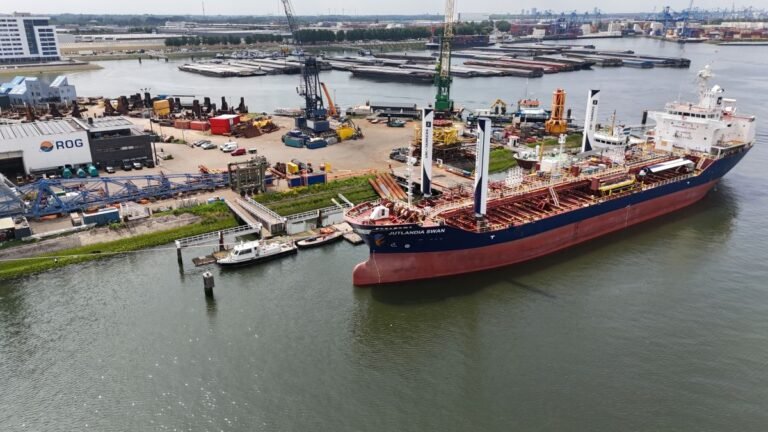Danish Ship Uni-Tankers Equips Vessel with VentoFoils Wingsails for Emissions Reduction
Danish ship owner and operator Uni-Tankers has taken a significant step towards reducing maritime emissions by installing VentoFoils wingsails on its vessel Jutlandia Swan. This initiative aims to provide valuable data on the impact of wind-assisted sails on commercial vessels.
The integration of four VentoFoils on Uni-Tankers’ ship is part of the Cleanship project, a research collaboration launched in 2024 by the Danish Technological Institute and various industry partners. The project, supported by a grant from the Danish Environmental Protection Agency, focuses on testing biofuels, energy-saving technologies, and operational optimizations to decrease carbon emissions in the maritime sector.
With the wingsails in place, Jutlandia Swan is set to embark on a journey to gather performance data that will help the shipping industry enhance fuel efficiency and reduce environmental impact. The VentoFoils are designed to harness wind power during open-sea voyages, offering additional thrust and reducing the reliance on traditional engine power.
Throughout the trial, the ship’s systems will monitor the VentoFoils’ performance by tracking fuel consumption, speed, engine load, and weather conditions. This real-time data collection will provide valuable insights into the practical benefits of wind-assisted propulsion for commercial vessels.
“This is a key milestone for the Cleanship project as we enter a new phase. By measuring this technology under real-sailing conditions, we can deliver valuable insights into the actual effects of energy-efficient solutions on vessels,” said Julie Tølbøl Rasmussen, Senior Project Manager at the Danish Technological Institute and for the Cleanship project.
Kristian Larsen, Technical Director at Uni-Tankers, emphasized the importance of integrating wind-assisted propulsion into daily operations, stating: “Wind-assisted propulsion holds clear potential, but its real value depends on how well it is integrated into daily operations. We now have the opportunity to test how these sails perform at sea, what they mean for fuel efficiency, and how the crew can work with them in practice.”

